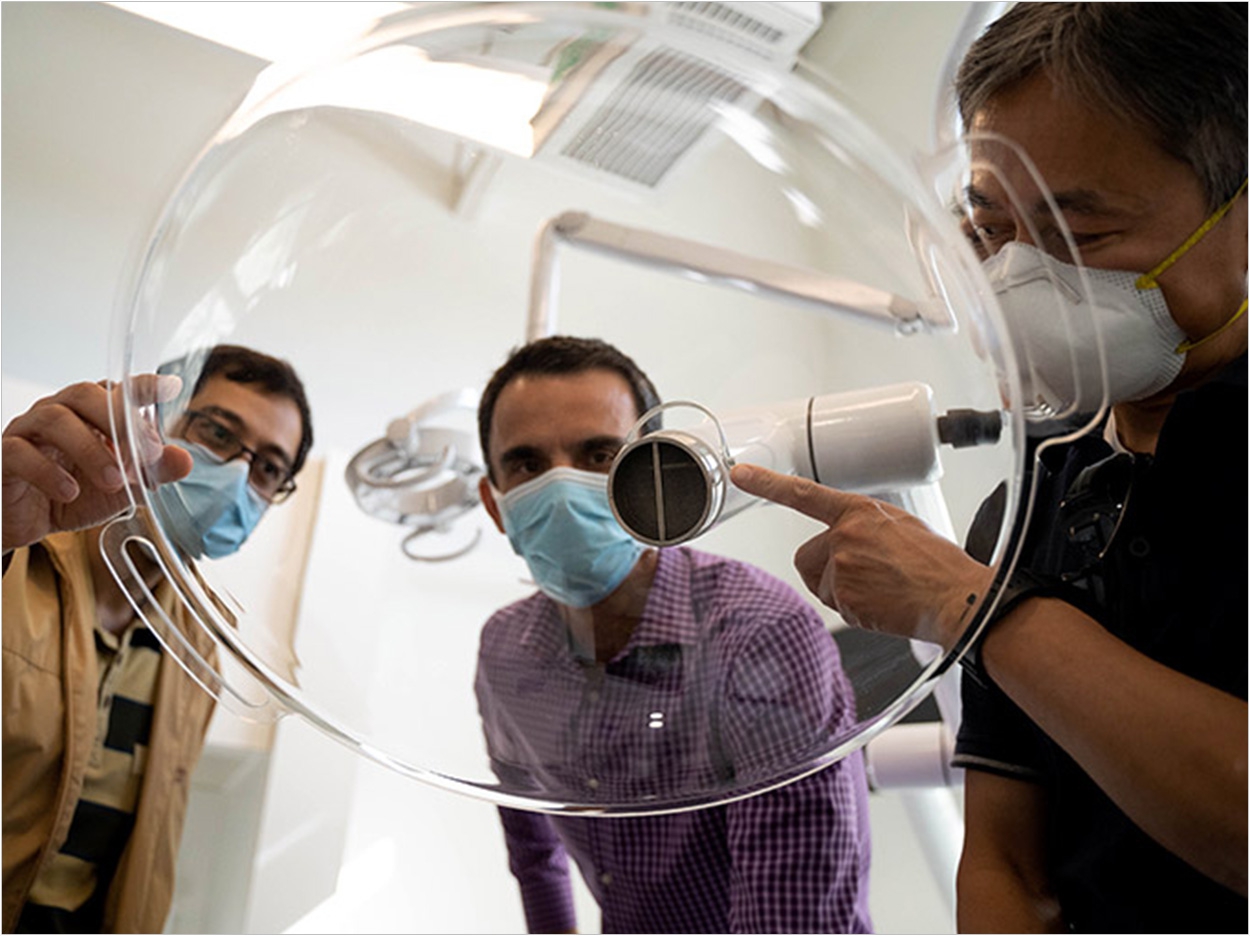
Researchers at the University of British Columbia Okanagan Campus (UBCO) are collaborating with Care Health Meditech to develop a device that isolates and eliminates airborne droplets and germs associated with COVID-19 and other illnesses.
With operating principles similar to a vacuum hood, the Airborne Infection Isolation and Removal (AIIR) device initially was designed for dentistry to improve the safety of both staff and patients, as many dental procedures generate aerosols.
These aerosols float in the room and can include dangerous particles that contain viruses like SARS-CoV-2, influenza, tuberculosis, and the human papillomavirus, as well as aerosolized mercury, said Care Health Meditech managing partner Stephen Munro.
“To aid in the development of AIIR, we turned to UBC researchers for their expertise in multiphase flows and computational fluid dynamics which will help evolve the design, ensuring its effectiveness,” said Munro.
COVID-19 virus transmission is believed to occur through breathing in respiratory droplets, touching contaminated surfaces or inhaling particles in the air. According to Munro, the key to controlling transmission is isolating and eliminating COVID-19 contaminated air and droplets, particularly aerosols.
While the AIIR devices is currently being used by some dentists, UBCO researchers are now looking at ways to improve the design through computational fluid dynamics simulation and specific testing in associate professor Sunny Li’s Thermal Management and Multiphase Flows lab.
“Our team is looking at the device’s size and geometry in connection with its airflow dynamics and the dynamics of droplets and particles to make it more accurate and efficient,” said Li, who teaches multiphase flows and is one of the lead researchers on the project.
Li is working with assistant professors Joshua Brinkerhoff and Sina Kheirkhah from the School of Engineering and associate professor Jonathan Little from the School of Health and Exercise Sciences to provide design modifications and recommendations.
During testing, dental procedures will be mimicked in the lab with a dental mannequin connected to a breathing simulator. Particle imaging velocimetry and high-speed shadow photography imaging will be used to visualize airflow and track the motion of all droplets. Droplet motion and trajectory can vary depending on droplet size and local airflow, said Li.
While work is being done in the labs to optimize and improve the device for frontline acute healthcare settings, due to high demand, Care Health Meditech’s AIIR device is already being delivered to dentists in the United States and Canada.
“Although we are targeting the dental industry, there’s an opportunity to expand into other areas where the risk of airborne infection is high,” said Munro, adding that his company already has developed in-house manufacturing capabilities for the device.
“The AIIR has the potential to reduce the risk of patients and dentists being exposed to the COVID-19 virus and will allow dentistry to return to near-normal procedures,” said Munro.
“This is significant for Canada and the world as it reduces the need for production and the purchase of personal protection equipment (PPE), and in a few years we aim to have the potential to reduce the need for PPE and N95 respirators for routine procedures in hospitals, doctors’ offices, and care facilities,” Munro said.
The research is funded by a Mitacs Accelerate Grant.
Related Articles
Henry Schein to Distribute Radic8 Air Purifiers
Exhaust Snorkels Remove Aerosols
Mask Deactivates 99.9% of Coronavirus


